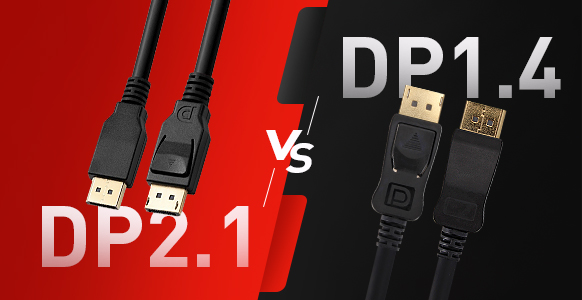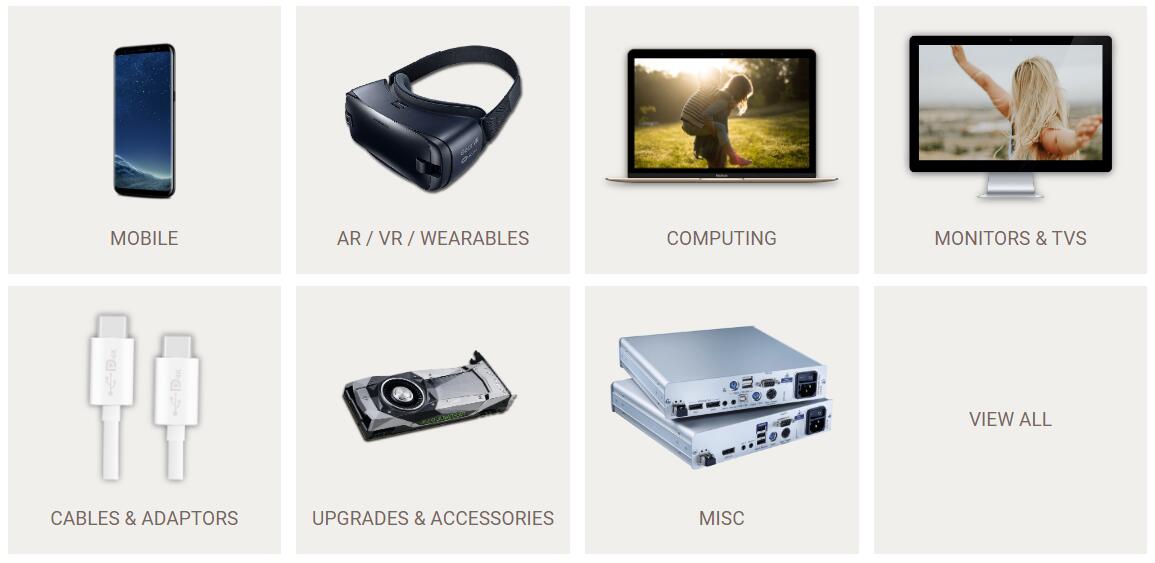
The difference between DP2.1 and DP1.4
1. Interface difference
DP2.1 has two shapes of DisplayPort and USB Type-C, and DP1.4 is still a traditional DisplayPort interface.
Note that although the appearance of the DP2.1 interface is the same as that of the Type-C interface and the Thunderbolt 3 interface, the protocols of the three are different, and the functions are very different.
2. Bandwidth capability
DP2.1 bandwidth is 40Gbps and 80Gbps, supporting 16K@30Hz, 8K@120Hz and 4K@144Hz;
DP1.4 has a bandwidth of 32.4Gbps and supports 8K@30Hz and 4K@120Hz.
Because of DSC technology, DP1.4 can also support high resolution and refresh rate, but it is always compressed, and the compressed picture quality is still slightly inferior to the original picture quality.
VESA Certified DisplayPort Products

FAQ
Q: Does the release of DisplayPort 2.1 mean that DisplayPort 1.4a and 2.0 products are obsolete?
A: Not at all. VESA develops and publishes standards like DisplayPort prior to their actual deployment in the field. DisplayPort 2.1 represents the latest interconnect technology now available to consumers from manufacturers. And like other new versions of DisplayPort, DisplayPort 2.1 is backward compatible with earlier DisplayPort standards.
Q: Are products certified as DisplayPort 2.0 automatically certified as DisplayPort 2.1?
A: The certification is not automatic, however VESA has been working closely with member companies to ensure that products supporting DisplayPort 2.0 would actually meet the newer, more demanding DisplayPort 2.1 spec. Due to this effort, all previously-certified DisplayPort 2.0 products including UHBR (Ultra-high Bit Rate) capable products have already been certified to the stricter DisplayPort 2.1 spec.
Q: Can a DisplayPort 1.4 product be certified as DisplayPort 2.1?
A: VESA will only certify devices to the DisplayPort 2.1 spec that support new features outlined in the specification that were not supported in DisplayPort 1.4.
Compliance test specifications for DP 1.2 through DP 2.1 each have a specific list of requirements that products must meet in order to pass certification. DP 2.1 devices must support VESA’s Display Stream Compression (DSC) visually lossless compression standard, as well as at least one of the following features:
UHBR with 128/132b encoding which has only 3% overhead (vs RBR/HBR/HBR2/HBR3 with 8/10b encoding which has 20% overhead and was introduced with earlier versions of DisplayPort)
AdaptiveSync Secondary Data Packets
Link-Training Tunable PHY Repeaters (LTTPRs) which help maintain signal integrity for high-speed DisplayPort signal transmission from source to sink
Q: How many versions of DP2.1 cables are there and how long can they be?
A: DP40 and DP80 are two versions. The DP40 data cable can exceed 2 meters; the DP80 data cable can also exceed 1 meter without affecting UHBR performance.
SUMMARY
The release of the DP2.1 standard is not a simple version upgrade. DP2.1 ensures that products that support DisplayPort 2.0 (including GPUs, docking chips, display scalar chips, PHY relay chips, DP40/DP80 cables, etc.) can meet the requirements of DisplayPort 2.1 Specification.
If you want learn more infomation about DisplayPort, just follow VCOM Official - the professional DP & HDMI cable manufacturer.
Tag:




